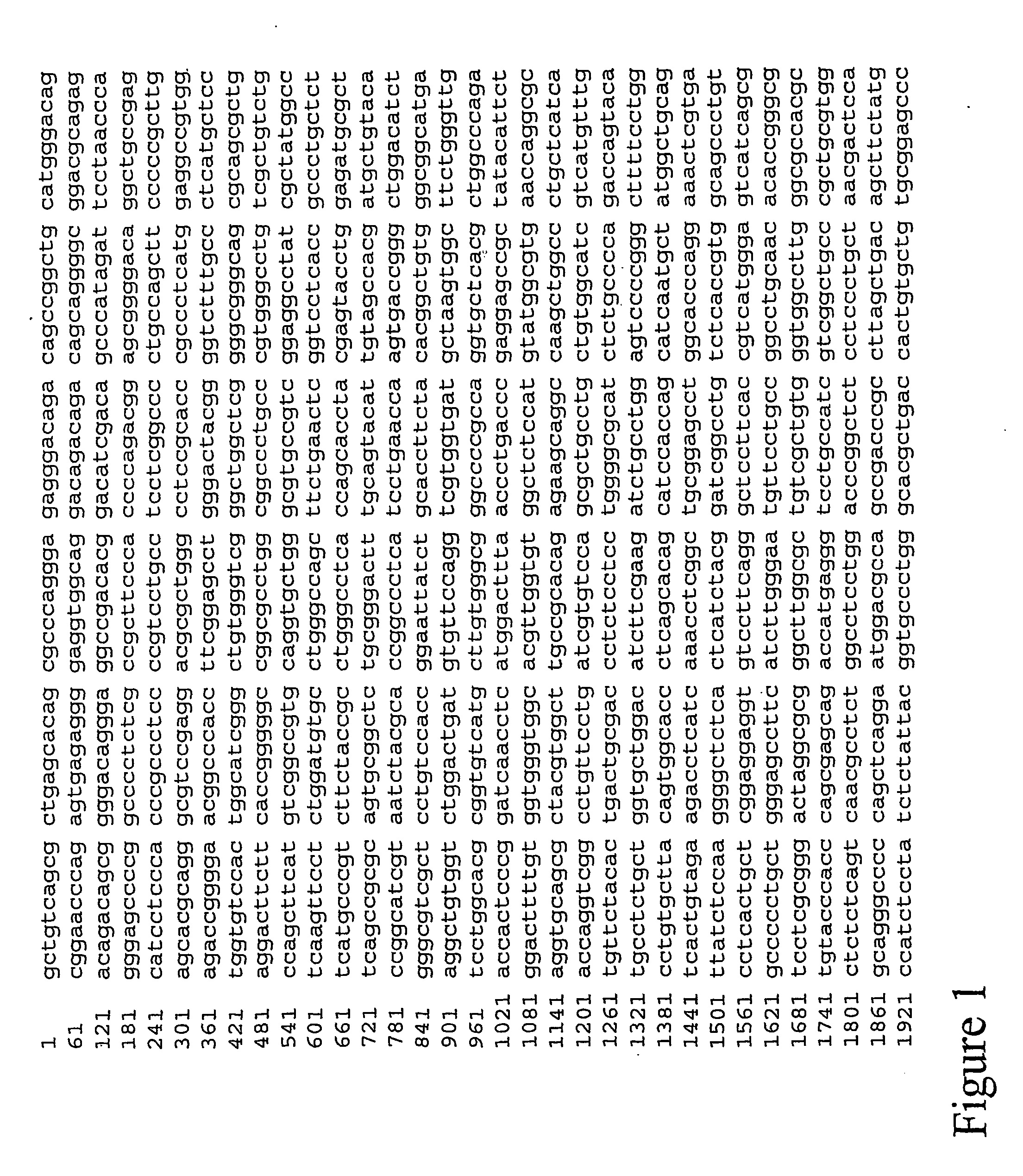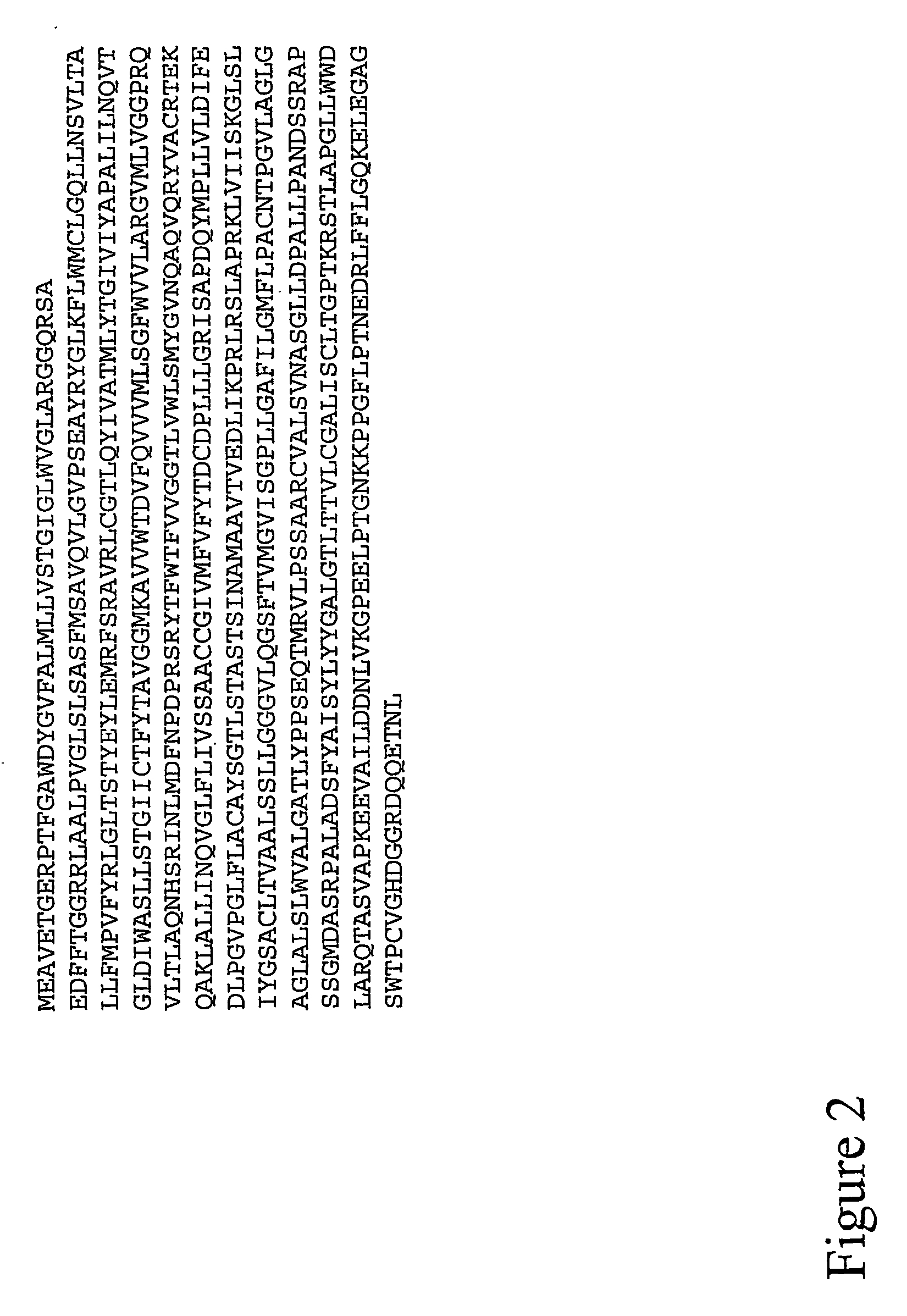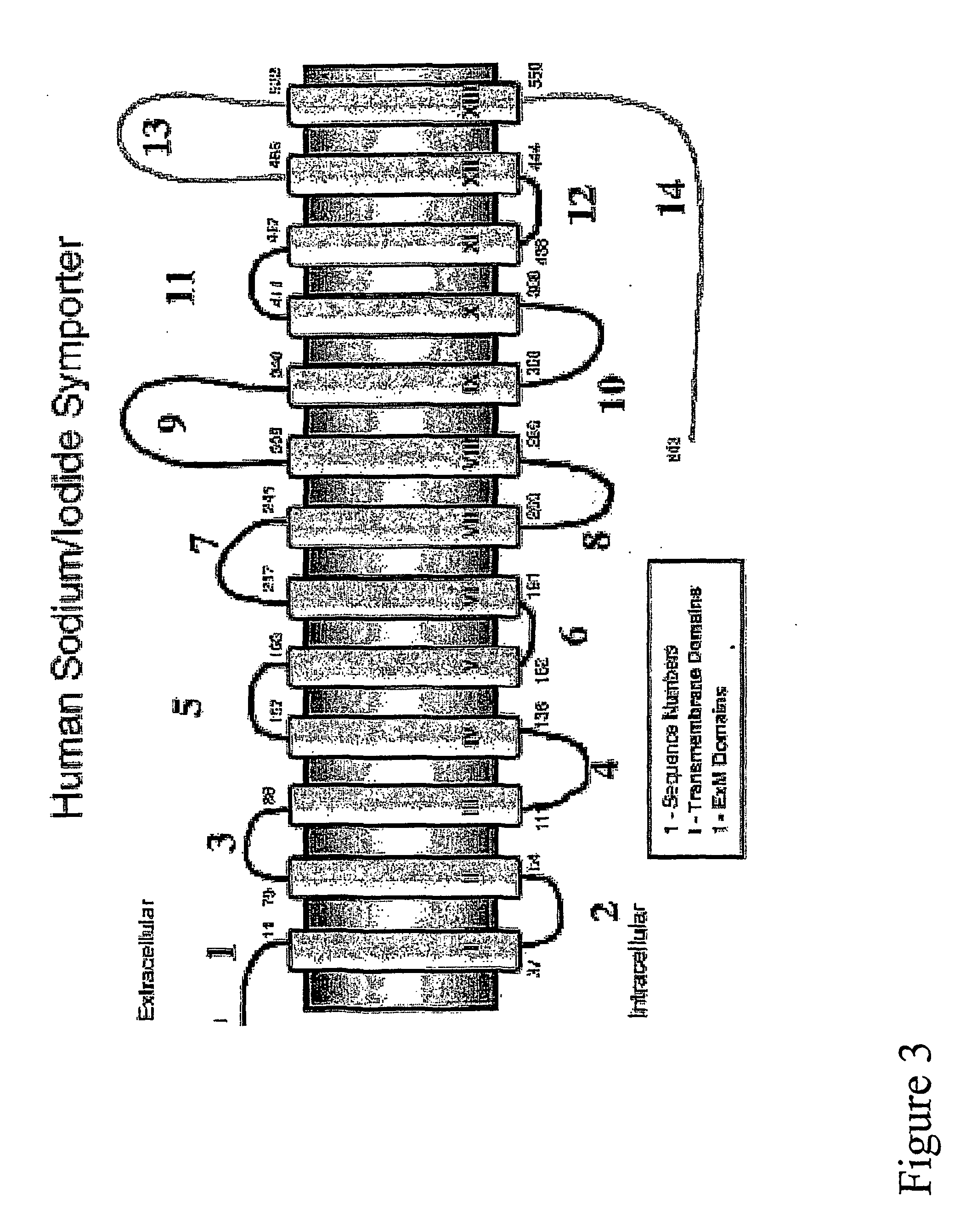Modified sodium iodide symporter proteins and genes for imaging and cancer therapy
a technology of sodium iodide and symporter proteins, which is applied in the field of modified sodium iodide symporter proteins and genes for imaging and cancer therapy, can solve the problems of limiting the short time that such radioiodide is retained inside the cell, affecting the effectiveness of such treatment and imaging, and reducing the viability of cells. , the effect of reducing the growth ra
- Summary
- Abstract
- Description
- Claims
- Application Information
AI Technical Summary
Benefits of technology
Problems solved by technology
Method used
Image
Examples
example 1
Recombinant Retrovirus Containing NIS used to Infect F98 Glioma Cells
[0075] A full length wild-type hNIS polynucleotide sequence (i.e., a cDNA) was inserted into the pLXSN retroviral vector20, using standard recombinant DNA techniques known to those in the art, such that the Moloney Murine Leukemia Virus Long Terminal Repeat (LTR) promoter caused hNIS expression and the SV40 promoter caused Neor expression (a construct referred to as L-hNIS-SN, see FIG. 4A).
[0076] PA317 cells (American Type Culture Collection, ATCC, Manassas, Va.) were maintained in Dulbecco's Modified Eagle's Medium (DMEM) (Gibco-BRL, Gaithersberg, MD) with high glucose and L-glutamine supplemented with 10% fetal bovine serum, 10 units / ml penicillin, and 10 μg / ml streptomycin. PA317 retroviral packing cells were transfected with 10 μg of L-hNIS-SN or LXSN DNA, respectively, using the calcium-phosphate precipitation method, as known in the art. Selection was performed using 750 μg / ml G418 (Gibco BRL) in the media ...
example 2
Intracerebral F98 Brain Tumor Model
[0082] Fischer rats weighing 175 to 200 grams (Harlan Sprague Dawley, Indianapolis, Ind.) were stereotactically implanted with tumor cells.11,21 The tumor cells were either F98 cells or F98 cells which had been infected with and expressed a wild-type NIS protein (see Example 1). All experimental procedures received approval from Institutional Laboratory Animal Care and Use Committee of the Ohio State University. Briefly, rats were sedated by intraperitoneal (i.p.) administration of 120 mg of ketamine / 20 mg of xylazine (Fort Dodge, Fort Dodge, IA) per kg of body weight, after which a plastic screw (Arrow Machine Manufacturing, Inc., Richmond, VA) was embedded into the cranium. F98 cells were injected within 10 to 15 seconds through a central hole in the plastic screw into the right hemisphere at a concentration of 103 (for therapeutic study) or 105 (for imaging study) cells in 10 μl of serum-free DMEM containing 1.4% agarose with a gelling temperat...
example 3
F98 / hNIS Tumor Sizes >4.5 mm in Diameter Were Detectable By 99mTcO4 Scintigraphy
[0085] Rats were anesthetized by i.p. injection of ketamine / xylazine, and then 2.0 mCi of 99mTcO4 in 0.2 ml volume was administered via tail vein injection. Approximately 20 minutes after injection, rats were imaged with a dual head gamma camera (Picker Prism 2000, Marconi Medical Systems, Cleveland, Ohio) equipped with a pinhole collimator and a low energy ultra high-resolution parallel hole collimator (LEUHR) on each head of the gamma camera, respectively. Vertex and right lateral views with at least 500K total counts per image, were collected. Image acquisition times ranged from 2-3 minutes.
[0086] In addition to the thyroid and parotid glands, intense 99mTcO4 uptake was found in the intracerebral F98 / hNIS gliomas in both vertex and lateral views (FIG. 6A). In contrast, no 99mTcO4 uptake was found in parental F98 tumors. For rats implanted with 105 F98 / hNIS glioma cells, the intracerebral tumor could...
PUM
| Property | Measurement | Unit |
|---|---|---|
| molecular mass | aaaaa | aaaaa |
| molecular mass | aaaaa | aaaaa |
| body weight | aaaaa | aaaaa |
Abstract
Description
Claims
Application Information
 Login to View More
Login to View More - R&D
- Intellectual Property
- Life Sciences
- Materials
- Tech Scout
- Unparalleled Data Quality
- Higher Quality Content
- 60% Fewer Hallucinations
Browse by: Latest US Patents, China's latest patents, Technical Efficacy Thesaurus, Application Domain, Technology Topic, Popular Technical Reports.
© 2025 PatSnap. All rights reserved.Legal|Privacy policy|Modern Slavery Act Transparency Statement|Sitemap|About US| Contact US: help@patsnap.com



